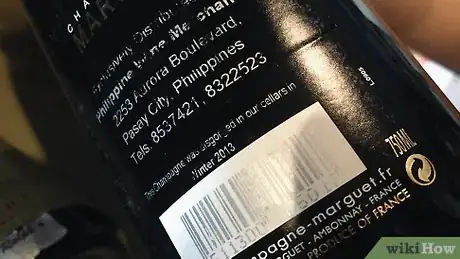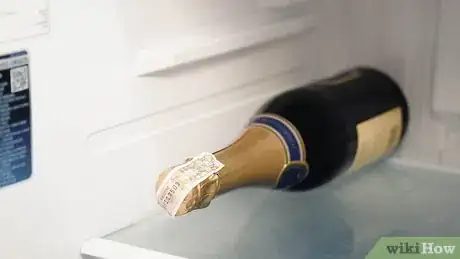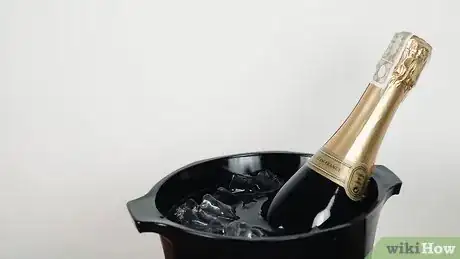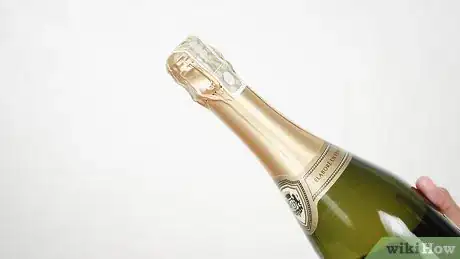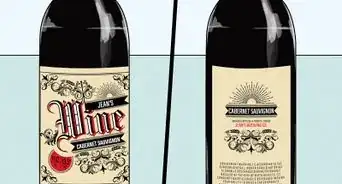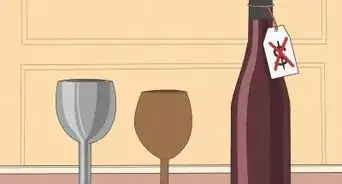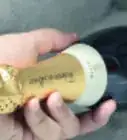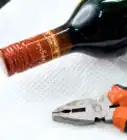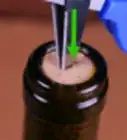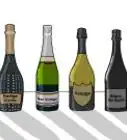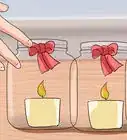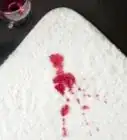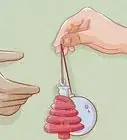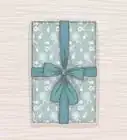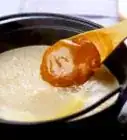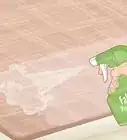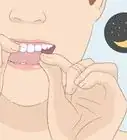This article was co-authored by wikiHow Staff. Our trained team of editors and researchers validate articles for accuracy and comprehensiveness. wikiHow's Content Management Team carefully monitors the work from our editorial staff to ensure that each article is backed by trusted research and meets our high quality standards.
There are 10 references cited in this article, which can be found at the bottom of the page.
The wikiHow Video Team also followed the article's instructions and verified that they work.
This article has been viewed 151,521 times.
Learn more...
Champagne is a bubbly wine made in France. This celebratory drink is very delicate, and requires unique procedures in proper storing, opening, and pouring to preserve its flavor and bubbles. Before pouring, you'll need to make sure it's at an ideal temperature, not too warm or too cold. When opening the bottle, hold it properly and avoid shaking it. When pouring, hold the glass at an angle and only fill it halfway so that you and your guests enjoy the champagne's unique aroma and taste.
Steps
Maintaining the Ideal Temperature
-
1Identify whether your champagne is vintage or non-vintage. Non-vintage champagne contains a blend of wine from at least 2 harvest years, while vintage champagne is made from the grapes of just one year's harvest. You can distinguish these two types of champagne by looking at their labels. Non-vintage champagne labels do not have a harvest year. Vintage champagne bottles clearly indicate the year that it was harvested.[1]
- You can also distinguish vintage and non-vintage champagne by their prices. Because vintage champagnes are only made a few times a decade, they are typically more expensive than non-vintage champagnes.
-
2Chill non-vintage champagne for 4 hours between 46.6 and 50 °F (8.1 and 10.0 °C). Non-vintage champagne is served best at a slightly chilled temperature. To keep it at its ideal temperature range, put the bottle in the refrigerator for approximately 4 hours. If you're in a hurry, you can put it in the freezer for 15 minutes or in an ice bucket for 20 minutes.
- Touch both the neck and the body to ensure that the temperature is even throughout the body before serving. If the champagne is too warm or too cold, you may miss out of some of the flavors.[2]
Advertisement -
3Keep vintage champagne between 50 and 53.6 °F (10.0 and 12.0 °C). Vintage champagne is best served at a slightly warmer temperature than non-vintage champagne. Keep it in the refrigerator for at least 3 hours, in the freezer for 10, or 15 minutes in an ice bucket.[3] .
- Vintage champagne is very delicate, so try to maintain the ideal temperature. The liquid will shock the taste buds if it is too cold.
-
4Use a cooler sleeve or ice bucket to maintain the temperature. If you're not ready to serve your champagne right after you take it out the refrigerator, you'll need to find a way to keep it cool in the meantime. Cooler sleeves are flexible and fit perfectly around the champagne bottle. All you need to do is keep the sleeve in the freezer, and then put it on your bottle before you serve it. To use an ice bucket, fill it up half-way with ice and then pour in some water before putting the champagne bottle inside.[4]
- You can find cooler sleeves by searching online. They come in many different colors and styles, choose one that best fits the occasion.
- If you're running low on time, add salt to the ice bucket to chill the champagne faster, as quickly as 5 minutes.[5]
Opening the Bottle
-
1Hold the bottle at a 45-degree angle and point it in a safe direction. Before opening the bottle, make sure it is pointed away from you, your drinking glasses, and anyone else you're serving. It's best to point it towards a wall where no person or delicate object is sitting. If you don't, the cork inside the bottle has the potential to pop and injure someone or knock something over when you open it. Also, tilt it slightly at a 45-degree angle so that the cork won't hit your face when you open it.[6]
- Keep a napkin nearby in case of any overflow.
-
2Remove the foil and wire cage at the top of the bottle. Most champagne bottles have foil wrapped around the top and on the neck. If it has a tab, use your free hand to tear and remove it. Then, remove the wire cage that holds the cork down. All you need to do is unwind it by twisting the circular part of the wire around about 6 half-turns.[7]
- If the champagne bottle doesn't have a tab to remove the foil, you can use a wine opener to cut it open.
-
3Use two hands to hold the bottle and twist off the cork. Hold the bottom of the bottle with your dominant hand and the cork with your other hand. Slowly twist the bottle while you slightly tilt the cork. As you do this, you will hear and feel the cork pop, and you'll know it's opened.[8]
- Keep your hand over the cork while you're opening the bottle so it doesn't fly out and possibly hit something.
-
4Continue holding the bottle still at a 45-degree angle to prevent foaming. Avoid moving the champagne bottle immediately after you open it. Hold it still at the 45-degree angle for a few seconds. This will allow the pressure to release after the cork separates from the bottle. If you move it too much right after opening, it can create excess foam that you want to avoid before serving.[9]
Pouring the Champagne
-
1Wash your champagne glasses and let them air-dry. The quality of your drinking glasses is very important in order to get the best champagne experience. Don't wash them in the dishwasher, as it can leave streaks and soap buildup. Make sure you hand-wash and let them air-dry in a well-ventilated room. This air-drying will ensure that the glasses stay cool to the touch. It is important that champagne glasses aren't too warm or too cool.[10]
- The best glasses for drinking champagne include tulips, flutes, and coupes. The shapes of these drinking glasses allow the champagne bubbles to accumulate and the aroma to maintain the aroma.
-
2Hold the glass by the stem and tilt it at a 45-degree angle. When pouring a glass of champagne, it is recommended to use your non-dominant hand to hold the glass at a 45-degree angle towards the champagne bottle. This will allow you to have the best control of the glass while you're pouring. Make sure to only hold the glass by the stem. If you hold it by touching the bowl, your fingers will warm up the champagne and ultimately affect its overall quality and taste.
- Have someone hold the glass for you if you're unable to hold and pour the bottle with one hand.
-
3Press your thumb into the bottom of the champagne bottle. Under each champagne bottle is a large indent, also called a “punt.” Put your thumb into the punt while you spread your fingers around the bottom of the bottle. Make sure you're using your dominant hand to hold the bottle so you have a good grip.
-
4Tip the bottle and slowly pour the champagne down the side of the glass. With your glass at a 45-degree angle, carefully tip the champagne bottle and begin pouring. Make sure you aim the liquid so that it touches the side of the glass as it pours out. This prevents the build-up of foam and loss of bubbles.[11]
- Do not let the bottle touch the glass. Champagne is sometimes stored in dusty areas, so do not risk getting your glass dirty.
-
5Pour a small amount into the glass and wait for the foam to subside. Do not pour all of the champagne at once. When you see about 1 inch (2.5 cm) in the class, tilt the bottle back to stop the flow. At this point, you want to stop and let the white foam diminish. This will prevent too much foam from forming in the glass, and reduce the loss of the bubbles.
- Remember to pour slowly. If you pour too fast, the glass can easily overflow.
-
6Continue to pour until the glass is half full. You should never fill a champagne glass all the way up to the top. Filling it just half-way or slightly less than half allows aromas to fill the top half of the glass, ultimately enhancing the overall experience and taste of the champagne. So when pouring your champagne fill it to the half-way point or to the widest point of the glass.[12]
- If you're pouring the champagne in a flute glass, make sure it is about half full. If you're using a wine glass, pour a little bit less than half.
Community Q&A
-
QuestionHow do I gift wrap a bottle of champagne?
 HumanBeingTop AnswererSince the shape of a bottle of champagne makes it easily identifiable wrapped, gift wrapping it, is not really necessary. A ribbon or bow tied to the neck of the bottle would make it look attractive. You could wrap the bottle in wrapping paper, simply roll the bottle in the paper, stick with tape and twist the paper at the top.
HumanBeingTop AnswererSince the shape of a bottle of champagne makes it easily identifiable wrapped, gift wrapping it, is not really necessary. A ribbon or bow tied to the neck of the bottle would make it look attractive. You could wrap the bottle in wrapping paper, simply roll the bottle in the paper, stick with tape and twist the paper at the top.
Things You'll Need
- Preferred bottle of champagne
- Champagne glasses (tulips, flutes, or coupes)
- Ice bucket or cooler sleeve
- Ice (optional)
- Salt (optional)
References
- ↑ https://bespokeunit.com/champagne/temperature
- ↑ https://youtu.be/hT4y891B9Ks?t=61
- ↑ https://www.kaaren-palmer-champagne.com/storing-champagne/
- ↑ https://cocktailcollective.com.au/2019/12/14/give-your-weekend-that-champagne-sparkle/
- ↑ https://youtu.be/hT4y891B9Ks?t=73
- ↑ https://www.thrillist.com/culture/how-to-open-champagne
- ↑ https://youtu.be/hT4y891B9Ks?t=92
- ↑ https://youtu.be/hT4y891B9Ks?t=103
- ↑ https://www.thrillist.com/culture/how-to-open-champagne
